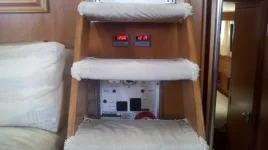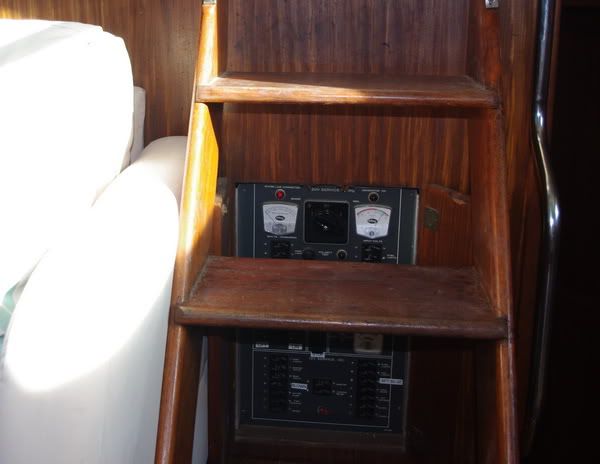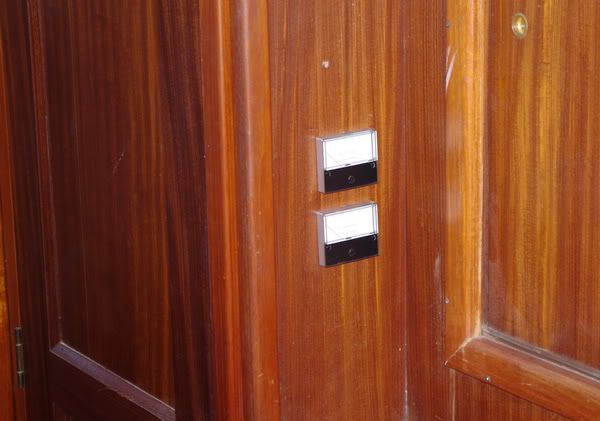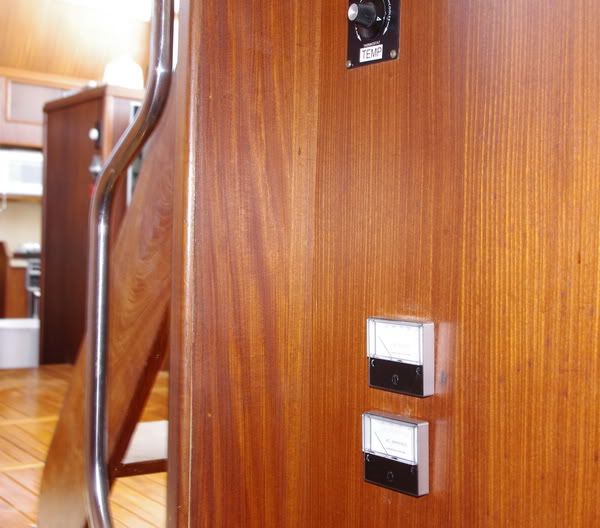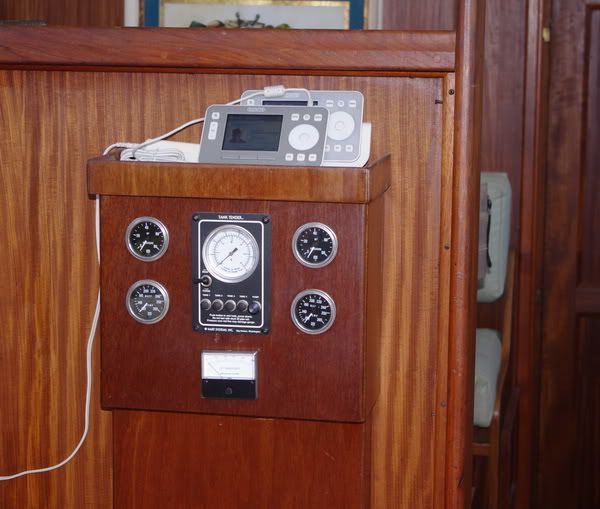Vincentc
Legendary Member
- Joined
- Jun 3, 2008
- Messages
- 1,514
- Status
- OWNER - I own a Hatteras Yacht
- Hatteras Model
- 43' DOUBLE CABIN (1970 - 1984)
Yesterday I replaced the shore power breakers and shore power receptacles (30amp) and when I tested my installation I found the following readings on the air conditioner panel voltmeter and watt meter:
no load- 112v 1000w
fan/water pump 110v 1000w
fwd compressor 104v
aft compressor 103v
fwd & aft comp 96v 3200w
This is dual 30 amp service.
The Ship Service volt meter shows 115v with just the refrigerator load. I did not check the ship service with a load.
This is the first time I noticed low voltage at the dock, but cannot say I've ever carefully checked it.
I guess my first step shoul be to plug the AC into the receptacle used for the Ship Service and see if anything changes.
Any insight on likely causes and testing methods will be appreciated. Obviously the watt meter for the air conditioner service has a problem, but the voltmeter appears to be accurate.
Thanks
no load- 112v 1000w
fan/water pump 110v 1000w
fwd compressor 104v
aft compressor 103v
fwd & aft comp 96v 3200w
This is dual 30 amp service.
The Ship Service volt meter shows 115v with just the refrigerator load. I did not check the ship service with a load.
This is the first time I noticed low voltage at the dock, but cannot say I've ever carefully checked it.
I guess my first step shoul be to plug the AC into the receptacle used for the Ship Service and see if anything changes.
Any insight on likely causes and testing methods will be appreciated. Obviously the watt meter for the air conditioner service has a problem, but the voltmeter appears to be accurate.
Thanks


